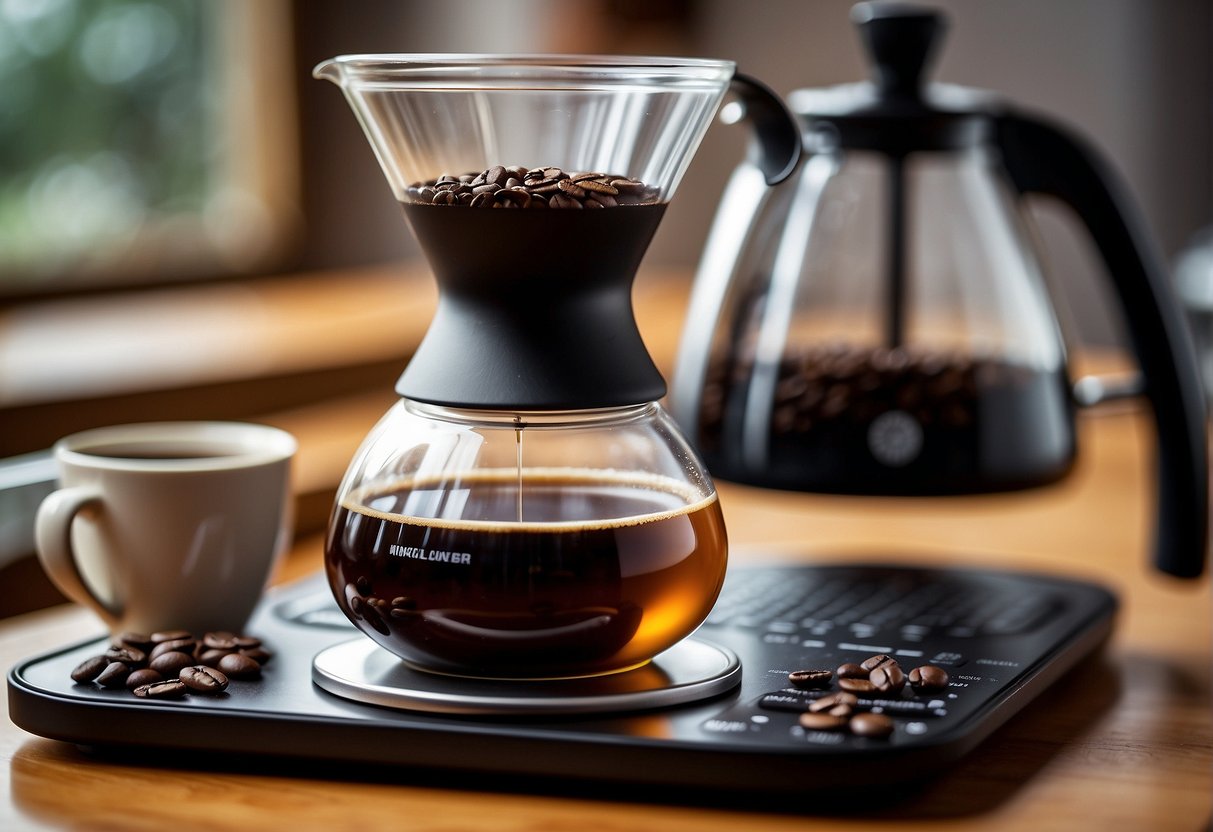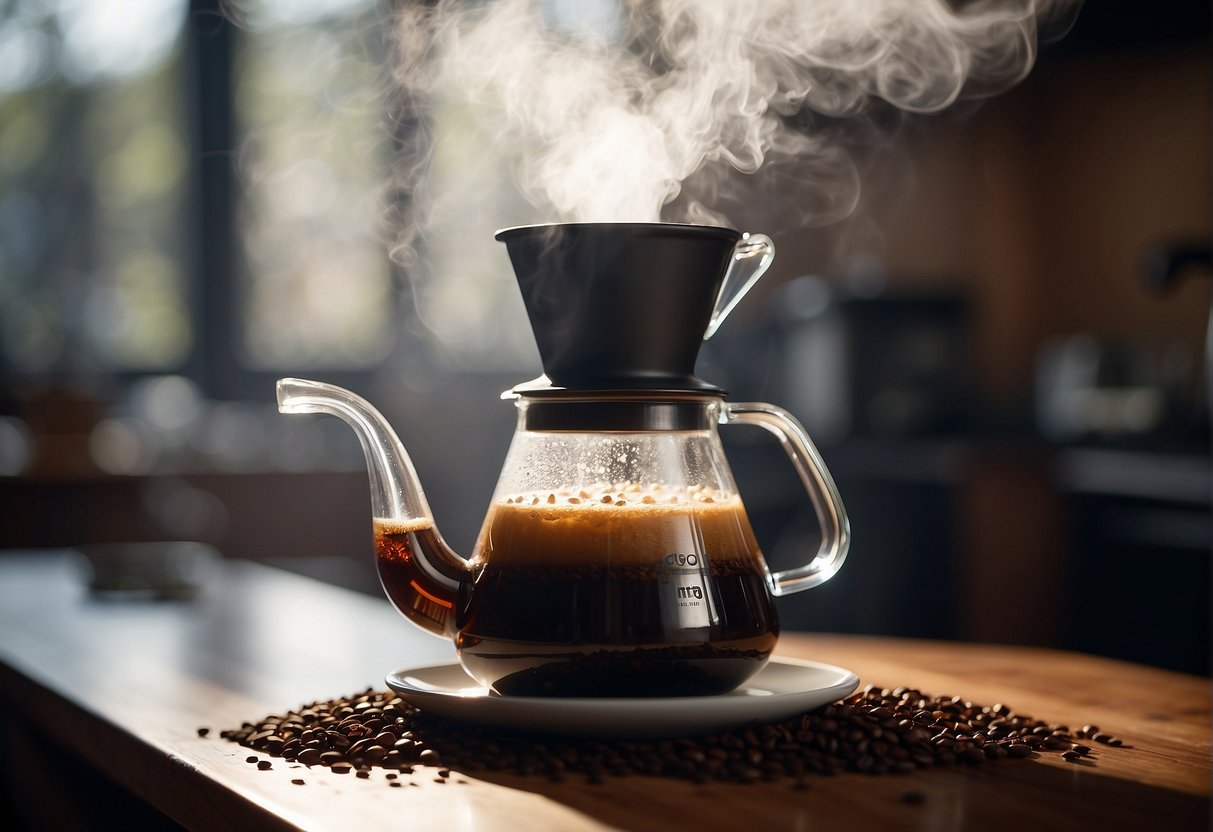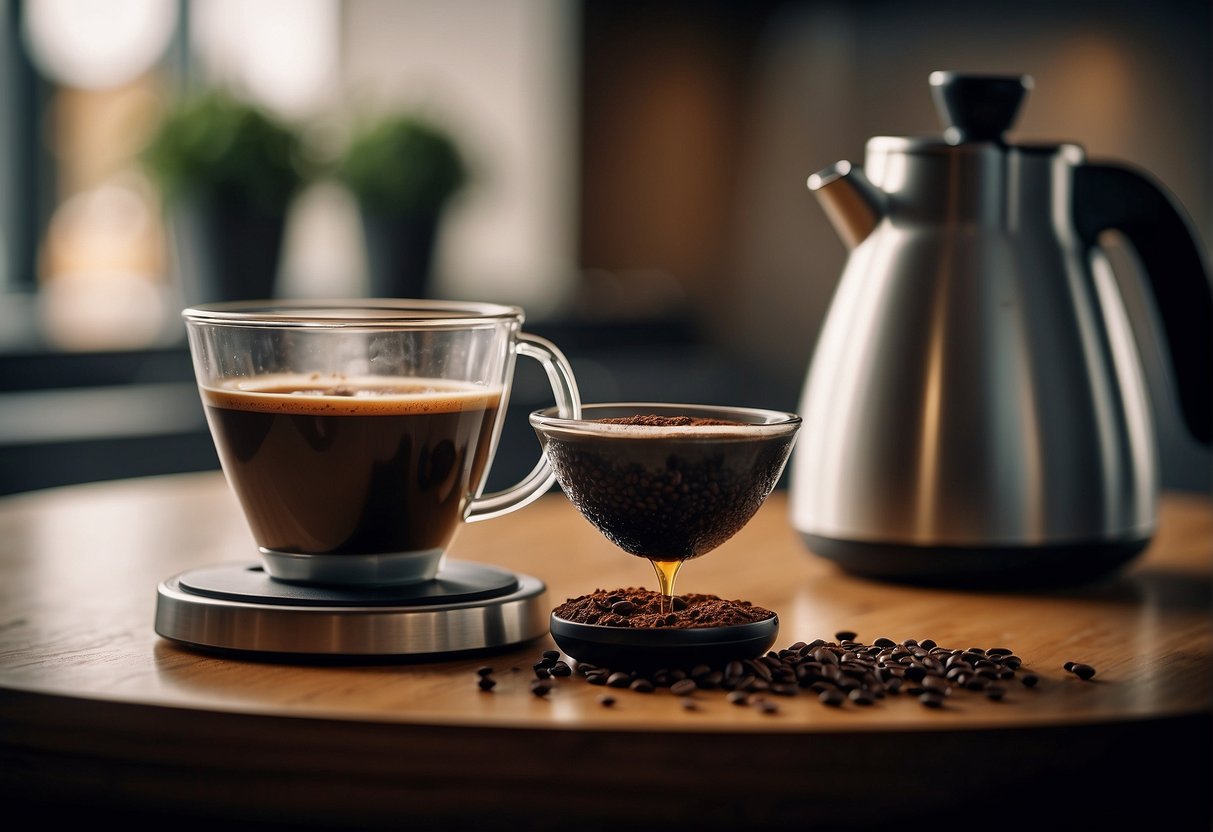The quest for the perfect cup of coffee is an ongoing endeavor that has given rise to a myriad of brewing techniques. Among these, the V60 brewing method stands out as a favorite for coffee aficionados. Pioneered by the renowned coffee expert James Hoffmann, the V60 approach to coffee brewing emphasizes precision and care, leading to a nuanced and flavorful cup of coffee.

James Hoffmann’s iteration of the V60 method is a culmination of his extensive knowledge and dedication to the craft of coffee. It manages to simplify the process while still paying significant attention to the details that matter. By focusing on the grind size, water temperature, and pouring technique, the Hoffman V60 method aims to extract the best possible flavor from the coffee beans. This technique has gained a substantial following for its ability to bring out a clear and distinct taste profile from the coffee, tailored to the preferences of the individual brewer.
Key to success with the Hoffman V60 technique is the equipment used. The conical V60 dripper, specifically recommended in plastic by Hoffman, is central to the process, allowing for even extraction and optimal brewing temperature. The method also suggests the use of high-quality, freshly ground coffee beans and soft, pleasant-tasting water to ensure that each cup is as delicious as intended. The meticulous nature of this brewing process has resonated with coffee enthusiasts and professionals, as they strive to achieve coffee excellence cup by cup.
The Basics of V60 Brewing
https://www.youtube.com/watch?v=AI4ynXzkSQo&embed=true
The V60 brewing method emphasizes precision and consistency, ensuring that the quality of the coffee shines through with each cup. By taking control of various factors such as the type of V60 equipment used, the coffee to water ratio, and the grind size, one can craft a delightful and nuanced cup of coffee.
Choosing Your V60 Equipment
The Hario V60 is a popular choice for many coffee enthusiasts and comes in various materials such as plastic, ceramic, glass, and metal. While each material has its own heat retention properties and aesthetic, a plastic V60 is often recommended for its thermal consistency and durability. One will also need a gooseneck kettle for precise pouring and a digital scale to measure coffee and water accurately.
Understanding Coffee to Water Ratio
The ratio of coffee to water is crucial for achieving the desired strength and flavor profile of your brew. James Hoffmann suggests using 60 grams of coffee per liter of water. A digital scale can aid in maintaining this ratio, which can be adjusted depending on the individual’s taste preference. For a standard serving, using 15 grams of coffee to 250 milliliters of water is a good starting point.
Grinding for the Perfect Extraction
A consistent medium grind is ideal for V60 brewing, as it allows for a balanced extraction without over or under-extracting the coffee. Achieving the right grind size requires a quality grinder; consistency in grind size leads to a more even extraction and a better cup of coffee. Ground coffee should resemble sea salt in texture, and adjustments to grind size can be made based on the brew time and taste results.
The Brewing Process

In the James Hoffmann V60 method, the brewing process emphasizes precision and technique, starting with the preparation of the filter and moving on to the significant step known as the bloom.
Preparation and Pre-Wetting the Filter
Before brewing can begin, it is critical to prepare the V60 coffee dripper. One should place a paper filter within the dripper and thoroughly pre-wet it with hot water. This not only helps to eliminate any papery taste but also warms the brewing vessel, ensuring temperature stability throughout the brewing process.
The Bloom: Starting Your Brew Right
The bloom is essential in releasing gases from the coffee grounds, paving the way for optimal extraction. To execute this step effectively, twice the amount of water to coffee grounds is gently poured to ensure all grounds are saturated. This initial pour should be done slowly, and the coffee should be allowed to bloom for 30 to 45 seconds, setting the stage for a well-developed cup.
Advanced V60 Techniques

When brewing with the V60, the subtleties of technique can elevate the ordinary cup to extraordinary. Mastery of the pour and precise control of water temperature are critical in extracting a balanced cup with optimal sweetness and acidity.
Mastering the Pour
The process begins with the kettle—a tool of precision in the hands of a skilled barista. A steady and controlled pour is paramount. It starts with a swirl to ensure the grounds are evenly wetted, setting the stage for a uniform extraction. Then, the pouring should be done in a clockwise direction, maintaining a spiral motion to cover all the grounds and avoid channeling. This V60 technique by James Hoffmann optimizes the chances of achieving a full spectrum of flavors from the beans.
Adjusting Water Temperature for Flavor
Water temperature is a dial for flavor adjustment. It can accentuate different taste notes within the same coffee. Brewing lighter roasts call for water just off the boil to extract their inherent sweetness and acidity sufficiently. Conversely, slightly cooler temperatures may suit darker roasts to avoid extracting bitterness. The key is to find the right balance that results in a balanced cup that aligns with personal preference. The James Hoffmann V60 method takes into account these variables, recommending fine adjustments based on the roast profile of the beans.
Fine-Tuning Your Brew
Fine-tuning your brew involves adjusting variables such as brew time and flow rate to achieve the perfect extraction. These factors can drastically alter the taste and quality of your coffee.
Experimenting with Brew Time and Flow Rate
Adjusting the brew time and flow rate can be the difference between an average and an exceptional cup of coffee. It’s vital to use a timer and ensure that your pour is consistent. For the James Hoffmann V60 method, he suggests pouring 60% of the total brew water over the grounds in about 30 seconds after the bloom phase has ended, which is typically 30 to 45 seconds. One can experiment by adjusting the pour timing to influence extraction. For instance, a slower pour can increase contact time and enhance extraction, potentially yielding a more flavorful cup.
Step-by-step guide for experimenting:
- Set a timer and begin with the recommended technique.
- Record the taste and quality of the coffee.
- For the subsequent brews, adjust the flow rate, either faster or slower, and keep note of the changes in flavor.
- Compare results and determine which flow rate yields the best extraction.
Finding the Right Extraction Time
Finding the perfect extraction time is crucial for a balanced cup of coffee. Hoffman’s method indicates that the entire process should take about 1:45 minutes. During this time, it’s recommended to use a medium-fine grind and a precise ratio of coffee to water to achieve optimal extraction. Extraction is affected by the grind size, water temperature, and pour technique, so small adjustments in these areas can lead to a significant difference in taste.
To refine the extraction time, one could:
- Use a spoon or stirrer to gently agitate the coffee grounds, which can increase even extraction.
- Adjust the grind size if the coffee tastes too bitter (over-extracted) or too sour (under-extracted).
- Keep a detailed log of adjustments and results to guide future brewing.
By carefully adjusting brewing parameters, one can achieve a V60 brew that is tailor-made to their taste preferences.
Serving and Enjoyment
Once the brewing process is completed using the James Hoffmann V60 method, proper serving and enjoyment of the coffee are necessary to fully appreciate its quality. These steps assist in highlighting the brew’s distinct characteristics.
Decanting and Serving the Brewed Coffee
After the coffee is brewed, they should decant it into a carafe or decanter. This allows the coffee to mix properly, ensuring consistency in flavor. A well-designed carafe not only serves a practical purpose but also adds an aesthetic touch to the serving experience. It’s ideal to use a glass server to appreciate the color and clarity of the coffee.
Exploring Taste Notes and Coffee Enjoyment
Coffee enthusiasts take pleasure in experiencing the nuanced taste notes of the V60 brew. They often find floral, fruity, or earthy tones, particularly in fresh single-origin and light to medium roasts. Enjoying coffee is not just about the taste; the temperature and the mouthfeel contribute significantly. While French press coffee may be favored for its full-bodied texture, the V60 method is renowned for its clean and intricate flavors, especially in dark roast coffee, which can reveal deep and robust notes without the sediment found in French press brews.
